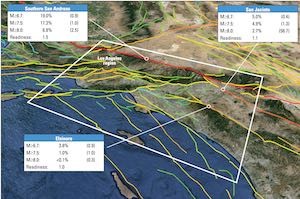 As we pack our bags for a series of Springtime HPC conferences, it’s time to clear the decks and point to some notable news items from this week that didn’t make it to the front page.
As we pack our bags for a series of Springtime HPC conferences, it’s time to clear the decks and point to some notable news items from this week that didn’t make it to the front page.
- Number-crunching the Higgs boson. As CERN prepares to refire the LHC, it turns out that much of the science that discovered the “God Particle” came down to one number – 126, the Higgs boson’s mass as measured in gigaelectronvolts. But this three-digit number rested upon something very much larger and more complicated: the more than 60 petabytes of data produced by colliding subatomic particles in four years of experiments, and the enormous computer power needed to make sense of it all.
 Did Homer Simpson get the Higgs first? In related news, it appears that a 1998 episode of “The Simpsons” almost beat CERN to the punch. “That equation predicts the mass of the Higgs boson” said science writer Simon Singh. “If you work it out, you get the mass of a Higgs boson that’s only a bit larger than the nano-mass of a Higgs boson actually is. It’s kind of amazing as Homer makes this prediction 14 years before it was discovered.”
Did Homer Simpson get the Higgs first? In related news, it appears that a 1998 episode of “The Simpsons” almost beat CERN to the punch. “That equation predicts the mass of the Higgs boson” said science writer Simon Singh. “If you work it out, you get the mass of a Higgs boson that’s only a bit larger than the nano-mass of a Higgs boson actually is. It’s kind of amazing as Homer makes this prediction 14 years before it was discovered.”
 See the world. Researchers at Princeton are using the Titan supercomputer to visualize seismic waves from earthquakes to better understand how earthquakes and volcanoes occur. The team is using the Titan to map the entire mantle, creating a three-dimensional map of the Earth to a depth of 1,800 miles below the surface. “You don’t know what it is you are looking for, you are hunting,” said Princeton professor Jeroen Tromp. “That is the real challenge, and that is the wonderful part of this project — waiting to see what we will discover.”
See the world. Researchers at Princeton are using the Titan supercomputer to visualize seismic waves from earthquakes to better understand how earthquakes and volcanoes occur. The team is using the Titan to map the entire mantle, creating a three-dimensional map of the Earth to a depth of 1,800 miles below the surface. “You don’t know what it is you are looking for, you are hunting,” said Princeton professor Jeroen Tromp. “That is the real challenge, and that is the wonderful part of this project — waiting to see what we will discover.”
 3D Printing New Piece Parts. General Electric and Lawrence Livermore National Laboratory recently received $540,000 to develop open-source algorithms that will improve additive manufacturing of metal parts. The award is from America Makes, the National Additive Manufacturing Innovation Institute that’s focused on helping the U.S. grow capabilities and strength in 3D printing. America Makes is funding the project to develop additive manufacturing technologies that allow more public and private sector organizations to enter the field.
3D Printing New Piece Parts. General Electric and Lawrence Livermore National Laboratory recently received $540,000 to develop open-source algorithms that will improve additive manufacturing of metal parts. The award is from America Makes, the National Additive Manufacturing Innovation Institute that’s focused on helping the U.S. grow capabilities and strength in 3D printing. America Makes is funding the project to develop additive manufacturing technologies that allow more public and private sector organizations to enter the field.
 TACC’s New Digs. The Texas Advanced Computing Center broke ground recently on a new building. This expansion will accommodate TACC’s significant growth, and be an architectural cornerstone for the J.J. Pickle Research Campus. TACC’s facilities are home to computing, data, and visualization resources as well as expert staff that support cutting-edge scientific research on such topics as predicting hurricanes and developing new energy sources.
TACC’s New Digs. The Texas Advanced Computing Center broke ground recently on a new building. This expansion will accommodate TACC’s significant growth, and be an architectural cornerstone for the J.J. Pickle Research Campus. TACC’s facilities are home to computing, data, and visualization resources as well as expert staff that support cutting-edge scientific research on such topics as predicting hurricanes and developing new energy sources.
 Quake Foresight. Scientists have developed a new earthquake forecasting model for California, a region under constant threat from potentially damaging events. The new UCERF3 model provides “authoritative” estimates of the magnitude, location, and likelihood of earthquake fault rupture throughout the state.
Quake Foresight. Scientists have developed a new earthquake forecasting model for California, a region under constant threat from potentially damaging events. The new UCERF3 model provides “authoritative” estimates of the magnitude, location, and likelihood of earthquake fault rupture throughout the state.



